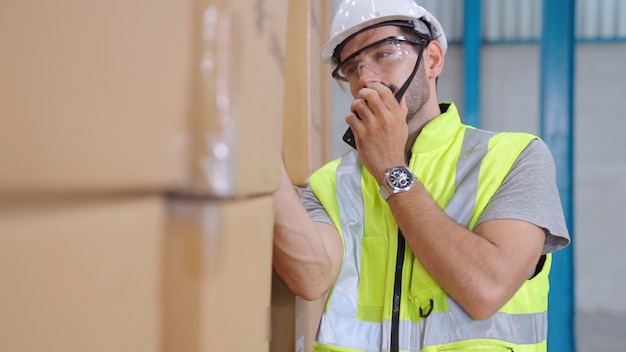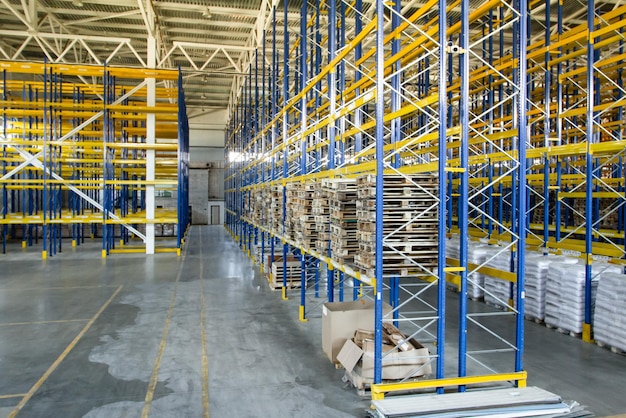Ensuring warehouse safety and maintaining operational efficiency is a top priority for any warehouse manager or operations professional. One critical aspect often overlooked is the condition of your warehouse pallet racking systems. Over time, even the most robust pallet racking can suffer from wear and tear, leading to potential safety hazards and operational disruptions. Knowing when to replace racking is crucial, and it requires regular pallet racking inspection to spot key indicators of damage or deterioration. In this blog post, we'll walk you through the signs that suggest it's time for a pallet racking replacement, helping you safeguard your inventory and keep your warehouse operations running smoothly.
Warehouse pallet racking forms the backbone of efficient storage and retrieval systems in modern warehouses. Let's explore why it's crucial for safety and operational efficiency.
Safety and Efficiency Concerns
Safety is paramount in warehouse operations. Proper pallet racking plays a vital role in preventing accidents and injuries.
Well-maintained racking systems reduce the risk of collapses, which can lead to severe injuries or fatalities. They also help organise inventory, making it easier for workers to locate and retrieve items quickly.
Efficient racking systems contribute to smoother warehouse operations. They maximise vertical space, allowing for better inventory organisation and improved stock rotation.
Impact on Operations
Effective pallet racking systems have a significant impact on warehouse operations. They streamline processes and boost productivity.
Properly designed racking layouts minimise travel time for forklifts and personnel. This leads to faster order fulfillment and reduced labor costs.
Good racking systems also improve inventory accuracy. They provide clear visibility of stock levels, reducing errors in order picking and restocking.
Signs You Need Pallet Racking Replacement
Recognising when it's time to replace your pallet racking is crucial for maintaining a safe and efficient warehouse. Here are key indicators to watch for.
Visible Damage and Wear
Visual inspection is the first step in identifying racking that needs replacement. Look for these signs of damage:
-
Bent or dented uprights
-
Cracked or broken beams
-
Loose or missing safety locks
Rust and corrosion are also red flags. They can weaken the structure of the racking, compromising its load-bearing capacity.
Pay attention to any signs of fatigue in the metal components. This can include small cracks or deformations that may not be immediately obvious.
Outdated System Issues
Outdated racking systems can hinder warehouse efficiency and pose safety risks. Here are some issues to consider:
-
Incompatibility with modern handling equipment
-
Inability to accommodate changing inventory needs
-
Lack of safety features found in newer systems
If your racking system is more than 15-20 years old, it may not meet current safety standards. Updating to modern systems can significantly improve safety and efficiency.
Older systems may also lack flexibility. If you find it difficult to reconfigure your racking to meet changing needs, it might be time for an upgrade.
Conducting a Pallet Racking Inspection

Regular inspections are essential for maintaining safe and efficient warehouse operations. Let's look at how to conduct these inspections effectively.
Regular Inspection Checklist
A thorough inspection checklist should include the following key areas:
-
Check for visible damage to uprights, beams, and connectors
-
Ensure all safety locks are in place and functioning
-
Verify that load signs are visible and accurate
-
Look for signs of overloading or improper use
Inspect the floor around the racking for any cracks or unevenness. These can indicate shifting or settling that may affect the racking's stability.
Document all findings, including photos of any damage or concerns. This creates a record for future reference and helps track patterns over time.
Professional Assessment Benefits
While regular in-house inspections are important, professional assessments offer additional benefits:
-
Expertise in identifying less obvious structural issues
-
Up-to-date knowledge of safety regulations and standards
-
Objective evaluation of your racking system's condition
Professional inspectors can provide detailed reports and recommendations. These can be valuable for planning maintenance or replacement strategies.
They can also offer insights on optimising your racking layout for improved efficiency and safety.
Enhancing Warehouse Safety

Safety should be the top priority in any warehouse operation. Let's explore key strategies for improving safety through proper weight distribution and employee training.
Proper Weight Distribution
Correct weight distribution is crucial for preventing racking failures and accidents. Consider these guidelines:
-
Always adhere to the manufacturer's load capacity ratings
-
Distribute weight evenly across beams and uprights
-
Place heavier items on lower levels for stability
Use appropriate pallets that fit your racking system. Oversized or damaged pallets can lead to uneven weight distribution and potential failures.
Regularly review your inventory placement strategy. Ensure that frequently accessed items are easily reachable to reduce the risk of overreaching or improper handling.
Employee Training and Awareness
Well-trained employees are your first line of defense against warehouse accidents. Focus on these areas in your training programs:
-
Proper operation of material handling equipment
-
Correct loading and unloading procedures
-
Recognition of racking damage and reporting protocols
-
Emergency response procedures
Encourage a culture of safety awareness. Employees should feel comfortable reporting any safety concerns they observe.
Conduct regular safety meetings to reinforce best practices and discuss any recent incidents or near-misses.
Making the Right Replacement Choice

When it's time to replace your pallet racking, making the right choice is crucial for long-term safety and efficiency. Let's explore how to select the best system and budget effectively.
Selecting the Best Racking System
Choosing the right racking system depends on various factors:
-
Type of inventory you store (size, weight, turnover rate)
-
Available space and ceiling height
-
Material handling equipment you use
-
Future growth projections
Consider systems like selective racking for versatility, drive-in racking for high-density storage, or push-back racking for LIFO inventory management.
Consult with racking experts to determine the best solution for your specific needs. They can provide valuable insights on system design and optimisation.
Cost Considerations and Budgeting
Budgeting for racking replacement involves more than just the initial purchase cost. Consider these factors:
-
Installation costs
-
Potential downtime during replacement
-
Long-term maintenance requirements
-
Improved efficiency and reduced accidents (cost savings)
|
Cost Factor |
Considerations |
|---|---|
|
Initial Purchase |
Quality of materials, load capacity |
|
Installation |
Labor, equipment rental, timeline |
|
Maintenance |
Regular inspections, repairs, replacements |
|
Efficiency Gains |
Improved storage capacity, faster operations |
Remember, investing in high-quality racking can lead to significant long-term savings through improved safety and efficiency.
Consider phased replacement if budget constraints are a concern. This allows you to upgrade your racking system gradually while spreading the cost over time.

